Paro Tshechu
The Paro Tshechu is one of Bhutan's most celebrated and anticipated festivals, held annually in the picturesque town of Paro. This vibrant event is a prime example of Bhutanese cultural and spiritual life, drawing both locals and tourists to witness its grandeur. Here are the key aspects of the Paro Tshechu:
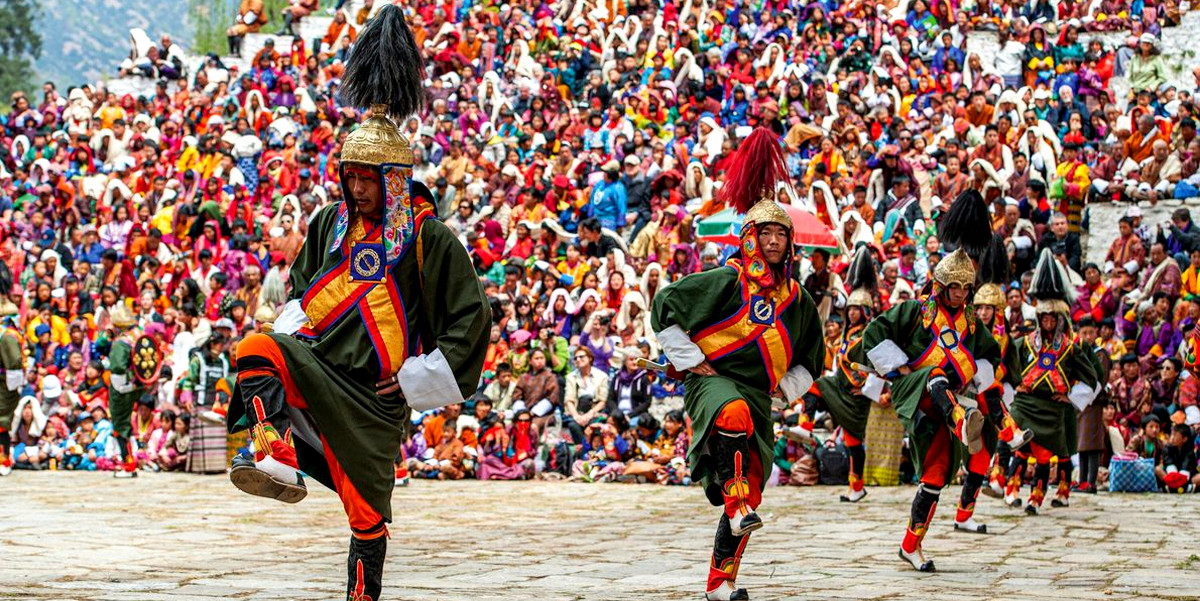
-
Historical and Spiritual Significance: The festival is typically held in spring, starting on the 10th day of the 2nd Bhutanese lunar month, which usually falls in March or April. It commemorates the birthday of Guru Padmasambhava, also known as Guru Rinpoche, who is credited with introducing Buddhism to Bhutan. The event lasts for five days and includes rituals and ceremonies intended to invoke the gods.
-
Colorful Masked Dances: One of the main attractions of the Paro Tshechu is the series of cham dances. These are masked and costumed dances performed by trained monks and laymen. The dances are deeply symbolic and are meant to impart moral lessons, depict the history of Buddhism, the triumph of good over evil, and tales of Guru Rinpoche. Each dance is a meticulous performance meant to evoke spiritual blessings.
-
The Unveiling of the Thongdrol: The highlight of the festival is the display of a gigantic thangka, known as a Thongdrol, which is unveiled before dawn on the final day of the festival. This sacred scroll, measuring several stories in height, is believed to be imbued with spiritual power, and that simply viewing it can cleanse one of sin. The Thongdrol is an exquisite piece of religious art, intricately detailed and only displayed for a few hours each year, making it a rare sight for devotees and visitors.
-
Social and Cultural Gathering: Paro Tshechu is also a social event where people from various districts dress in their finest clothes and jewelry and gather to celebrate, pray, and interact. It's an opportunity for the community to come together, enjoy traditional food, and partake in festivities. The festival serves not only a religious function but also social cohesion and cultural continuity.
-
Attraction for Tourists: For tourists, the Paro Tshechu offers a captivating insight into the cultural richness of Bhutan. It provides a unique opportunity to experience Bhutanese hospitality, witness the spiritual and artistic expressions of the Bhutanese people, and understand the deep ties they have to their religious traditions.
-
Importance to Bhutanese Culture: The Paro Tshechu, like other tshechus across the country, plays a critical role in preserving and showcasing Bhutan's cultural and religious heritage. It is a living tradition that remains an essential part of Bhutanese identity.
Visitors to the Paro Tshechu are encouraged to respect the spiritual nature of the festivities while enjoying the profound and uplifting cultural experience it offers.
Thimphu Tshechu
The Thimphu Tshechu is one of the biggest and most vibrant festivals in Bhutan, celebrated annually in the nation's capital, Thimphu. This grand event not only showcases the rich cultural and spiritual traditions of Bhutan but also serves as a significant occasion for social gathering, religious devotion, and festive celebration among the Bhutanese people. Here’s an in-depth look at the Thimphu Tshechu:
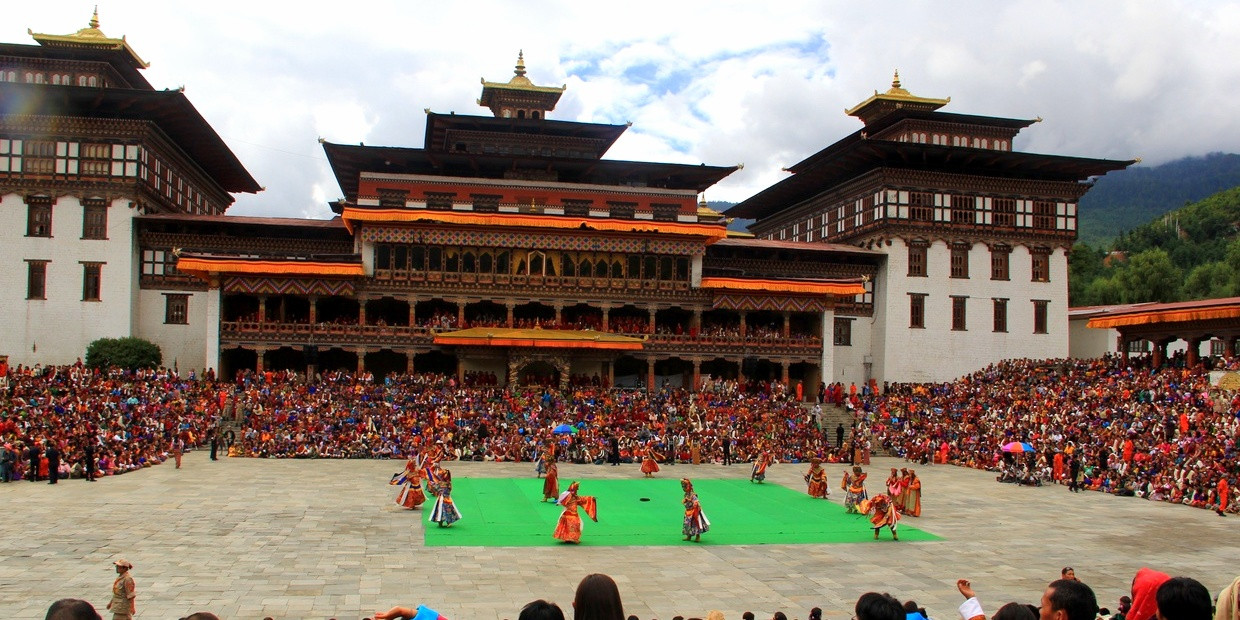
-
Historical Significance: The festival was initiated by the 4th Desi, Gyalse Tenzin Rabgay, in 1867. It commemorates the deeds of Padmasambhava, also known as Guru Rinpoche, who is credited with introducing Tantric Buddhism to the Himalayan regions. Held in the courtyard of the Tashichho Dzong in Thimphu, this festival is a major event in the Bhutanese calendar.
-
Festival Activities: Thimphu Tshechu spans three days, usually occurring in September or October, aligning with the 10th day of the 8th month of the lunar Tibetan calendar. The festival features a series of mask dances, known as Cham dances, performed by monks clad in elaborate silk costumes. Each dance narrates different stories of the life of Padmasambhava, the triumph of good over evil, or other themes central to Vajrayana Buddhism.
-
Cham Dances: The dances are the heart of the festival, with each one carrying symbolic meanings intended to impart moral teachings to the audience. These include the Dance of the Terrifying Deities, the Dance of the Black Hats, and the Dance of the Lords of the Cremation Grounds, among others. The movements are meticulously choreographed and are believed to bring spiritual blessings to the viewers.
-
Thongdrol Unveiling: Similar to other major Tshechus, the Thimphu Tshechu concludes with the unveiling of a large Thongdrol—a giant thangka that depicts Padmasambhava surrounded by holy beings. Viewing the Thongdrol at dawn on the final day is considered especially auspicious and is thought to cleanse viewers of their sins.
-
Cultural and Social Significance: This festival is a vibrant point of Bhutanese life, providing an opportunity for people from different walks of life to come together. Residents dress in their finest traditional garments and jewelry, creating a colorful spectacle of Bhutanese culture. It's a time for reunion, celebration, and the reinforcing of social ties.
-
Tourist Attraction: For tourists, the Thimphu Tshechu is a perfect opportunity to witness the grandeur of Bhutanese festival culture firsthand. The capital city's accessibility makes it an ideal location for those looking to explore Bhutan's traditions without venturing too far into the remote areas. The festival offers insights into the spiritual and communal life of Bhutan and provides unforgettable photographic opportunities.
The Thimphu Tshechu remains a deeply significant event for the Bhutanese, embodying the spiritual depth, historical richness, and cultural vibrancy of Bhutan. For anyone looking to experience the essence of Bhutanese identity and festivity, this festival is an essential visit.
Punakha Drubchen and Tshechu
The Punakha Drubchen and Punakha Tshechu are two of Bhutan's most significant and historic festivals, celebrated in the beautiful Punakha Valley. These festivals not only serve as vibrant displays of Bhutanese cultural identity but also commemorate a defining moment in the nation's history. Here’s a detailed look at these intertwined celebrations:
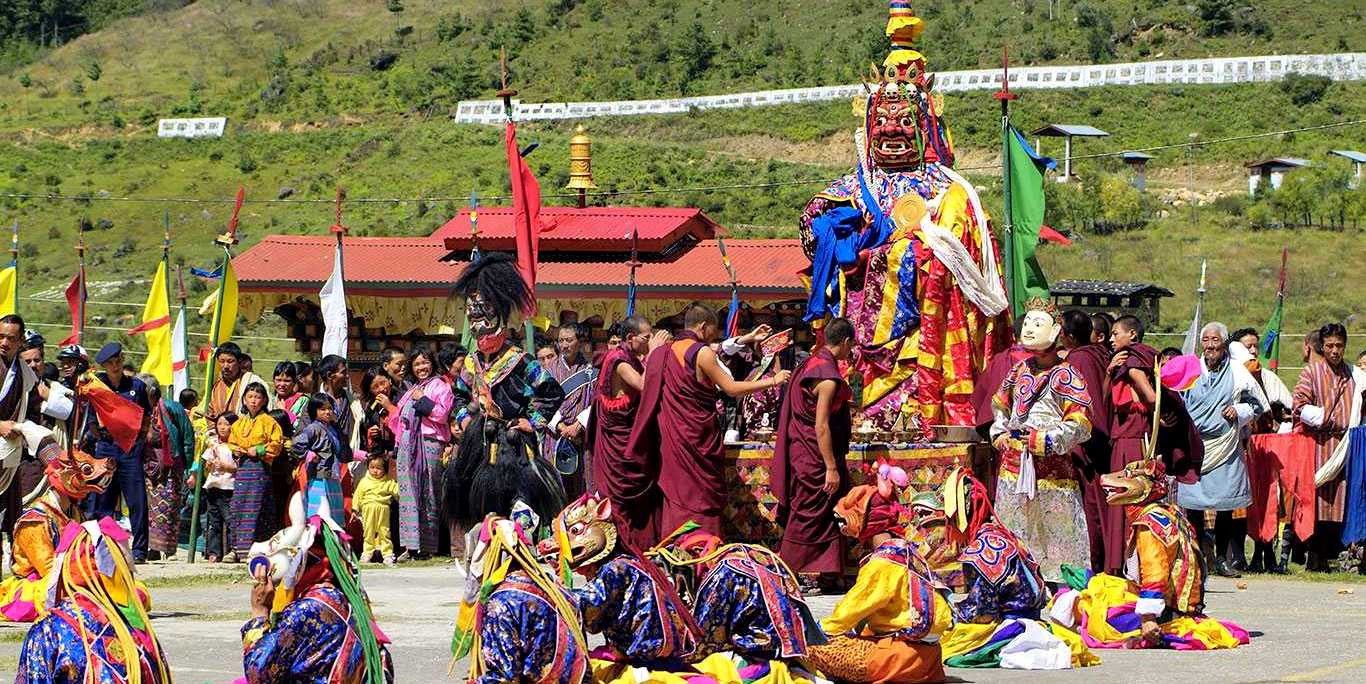
-
Historical Background: The Punakha Drubchen is a unique festival that commemorates the Bhutanese victory over Tibetan invaders in the 17th century. This victory ensured the unification of the country under Zhabdrung Ngawang Namgyal, the founder of the Bhutanese state. The Drubchen reenacts the battle scenes and is considered a tribute to the bravery of the Bhutanese soldiers during that period.
-
Punakha Drubchen: The Drubchen precedes the Tshechu and is known for its dramatic representation of the 17th-century battle, featuring local militia who dress as Bhutanese warriors. The festival is characterized by a dramatic recreation of the battle against Tibetan forces using a realistic, ritualistic mock battle performed in the courtyard of the majestic Punakha Dzong. This reenactment plays a crucial role in preserving the memory of Bhutan's warriors and instilling pride in its citizens.
-
Punakha Tshechu: Following the Drubchen, the Punakha Tshechu is celebrated to honor Padmasambhava, the sage guru who is credited with introducing Buddhism to Bhutan. The Tshechu features several days of dances, including both Chams (masked dances) and folk dances. The highlight is the unfurling of a large thangka, known as a Thongdrol, which depicts Padmasambhava and other sacred figures. Viewing the Thongdrol is believed to cleanse one’s sins.
-
Cultural Significance: The festivals are a major draw for both locals and tourists. For the local community, these events are a time for prayer, renewal, and affirmation of their cultural heritage. People come dressed in their finest traditional attire, making it a vibrant spectacle of color and festivity. It’s an important spiritual gathering that strengthens community ties and reaffirms their shared cultural and historical narratives.
-
Tourist Attraction: For tourists, the Punakha Drubchen and Tshechu offer a spectacular insight into the rich history and spiritual traditions of Bhutan. These festivals provide an opportunity to see the inside of the Punakha Dzong, otherwise known as the 'Palace of Great Happiness', which is usually restricted to the public. The architectural grandeur of the dzong, combined with the scenic beauty of its surroundings and the vibrant cultural performances, makes this event a memorable experience.
-
Timing and Travel Tips: The festivals typically take place in February or March, which is also an excellent time to enjoy the pleasant spring weather of Bhutan. Visitors are advised to book their trips well in advance due to the popularity of the festivals and limited accommodations in the Punakha Valley.
Attending the Punakha Drubchen and Tshechu offers a unique opportunity to witness the living history and spiritual devotion of Bhutan, encapsulated in a series of rituals and celebrations that are both enthralling and deeply meaningful.
Jambay Lhakhang Drup
The Jambay Lhakhang Drup is one of the most ancient and mystical festivals held annually in Bhutan, at the Jambay Lhakhang temple in Bumthang. This temple is one of the oldest in the kingdom, built by the Tibetan king Songtsen Gampo in the 7th century as part of a series of 108 temples constructed to subdue evil spirits in the Himalayan region. The festival is deeply rooted in history and spirituality, and it offers both locals and tourists a unique glimpse into Bhutanese cultural traditions.
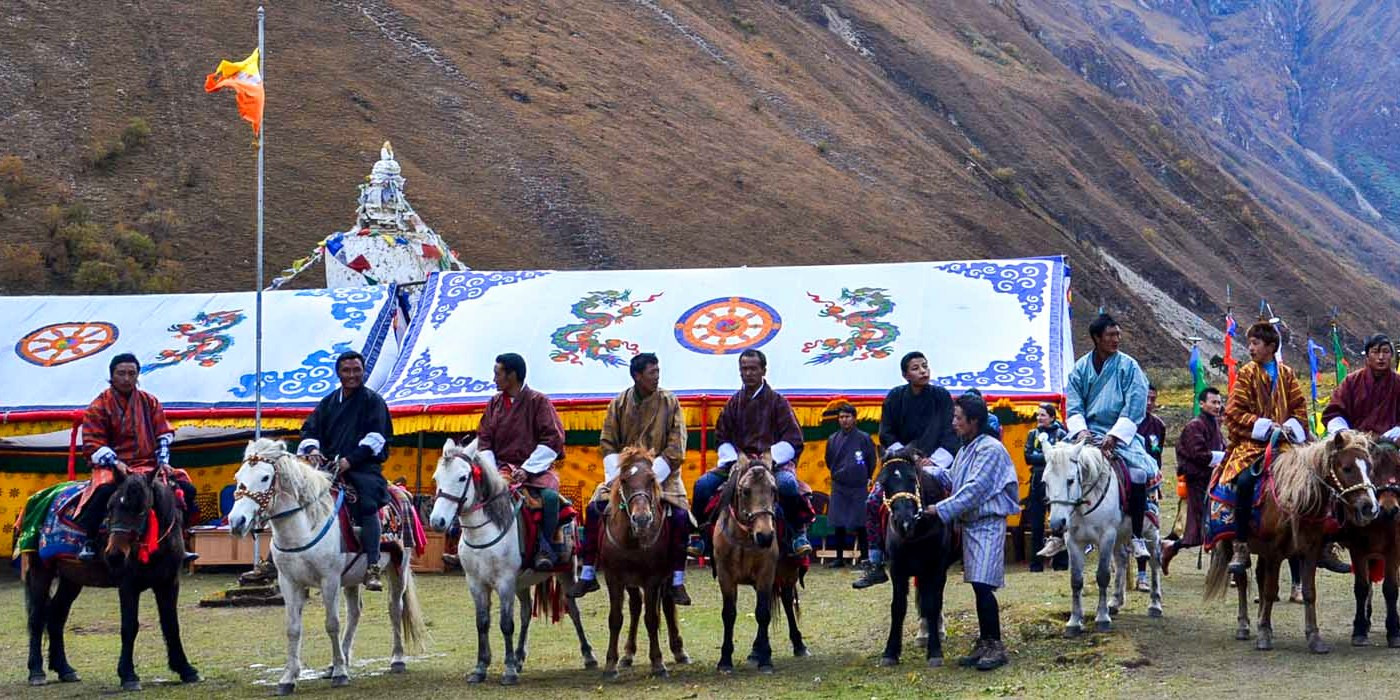
Historical Significance: The Jambay Lhakhang Drup celebrates the establishment of the Jambay Lhakhang temple and commemorates the introduction of Buddhism to Bhutan. It is held to honor Guru Rinpoche, who is believed to have visited Bhutan in the 8th century and introduced the Nyingma school of Buddhism.
Festival Highlights
-
Fire Ceremony: The festival is famous for its "Mewang" (Fire Ceremony), where a large archway made of dry grasses is set ablaze, and locals run underneath it. This ritual is performed to cleanse people of their sins and to bring blessings upon them.
-
Naked Dance: Perhaps the most unique and striking aspect of the Jambay Lhakhang Drup is the 'Tercham' or 'Naked Dance'. Performed by masked dancers wearing only minimal coverings, this dance is conducted at night and is believed to sanctify the ground and ward off evil spirits.
-
Mask and Folk Dances: The festival is also known for its colorful Cham dances, which are performed by monks and laymen wearing elaborate masks and costumes. These dances tell various Buddhist stories that convey moral lessons and the teachings of Guru Rinpoche.
Cultural and Social Significance: The festival not only serves as a spiritual observance but also as a social gathering, bringing together communities from across the region. It's an occasion for joyous celebration, where people dress in their finest traditional garments, share meals, and enjoy the company of family and friends.
Tourist Attraction: For tourists, the Jambay Lhakhang Drup offers a rare opportunity to witness unique cultural rites like the Naked Dance, which are not seen at other festivals. It provides deep insights into the rich tapestry of myth and religion that shapes Bhutanese life. The festival's location in the picturesque district of Bumthang also allows visitors to explore other cultural and historical sites in one of Bhutan’s most scenic regions.
Timing and Practical Information: The festival usually takes place in October or November, depending on the lunar calendar. Given the popularity of the festival and the limited accommodations in Bumthang, it is advisable for tourists to plan their visit well in advance.
Attending the Jambay Lhakhang Drup is an experience that encapsulates the essence of Bhutan’s spiritual depth and cultural heritage, offering an unforgettable glimpse into the ancient rituals that continue to play a vital role in Bhutanese society.
Haa Summer Festival
The Haa Summer Festival is a vibrant and relatively recent addition to Bhutan's festival calendar, celebrated in the stunning Haa Valley. This festival offers a splendid showcase of traditional living culture, sports, and religious performances, providing insights into the lifestyle of the nomadic and semi-nomadic herders of the region. Unlike the more religiously oriented festivals in Bhutan, the Haa Summer Festival focuses on celebrating the local culture, heritage, and community spirit.
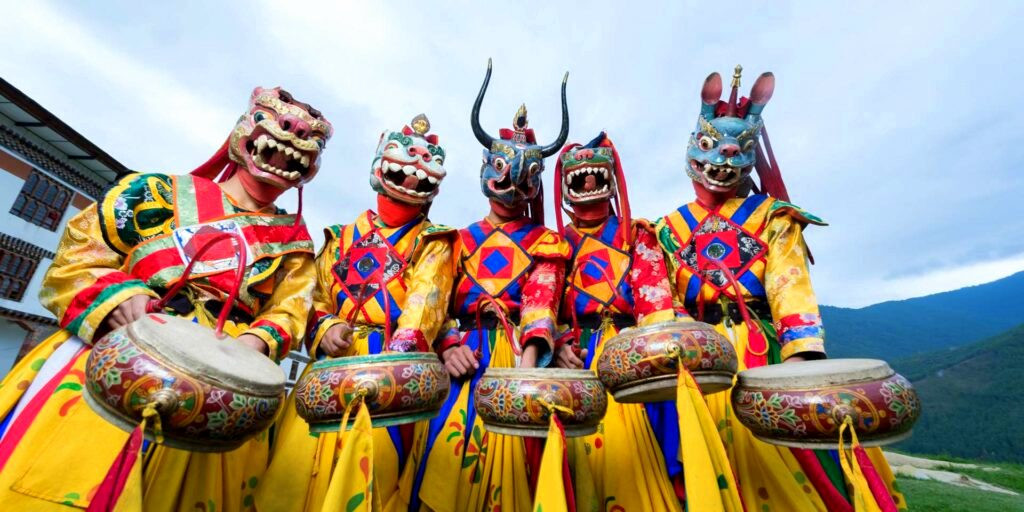
Festival Overview: Set against the backdrop of the pristine Haa Valley, one of the least explored regions of Bhutan, the Haa Summer Festival takes place every year in July. It was inaugurated to promote the rich cultural heritage of the valley and its economic activities, offering a different perspective on Bhutanese culture that emphasizes pastoral life and its connection to nature.
Highlights of the Festival
-
Local Cuisine and Crafts: Visitors have the opportunity to taste local delicacies and homemade brews specific to the Haa region. Traditional crafts and textiles are also on display, with local artisans often demonstrating their skills.
-
Traditional Sports: The festival features archery and dart (Khuru) competitions, which are among Bhutan’s most popular sports. These games are not only entertaining but also hold great cultural significance in Bhutanese society.
-
Cultural Performances: Music and dance performances by local troupes showcase the unique aspects of Haap culture. These performances include traditional songs and dances that have been passed down through generations.
-
Showcase of Nomadic Life: One of the festival's most fascinating aspects is the demonstration of the traditional nomadic lifestyle. Tents made of yak hair are set up, and visitors can observe and participate in daily activities of the nomadic herders such as yak shearing, milking, and the preparation of yak products.
Cultural and Social Significance: The Haa Summer Festival plays a critical role in preserving and promoting the cultural heritage of the Haa Valley's communities. It also helps in fostering pride among the younger generations and encouraging them to continue their traditional practices. The festival also serves as a social gathering point, reinforcing bonds within and between communities.
Tourist Attraction: For tourists, the festival is a chance to explore an area of Bhutan that is less frequented by outsiders. The Haa Valley's serene environment and the festival's rich array of activities offer a unique and authentic experience of Bhutan's rural culture. It's an excellent opportunity for those interested in photography, cultural immersion, and adventure.
Practical Information for Visitors: Visiting the Haa Summer Festival requires planning, as the valley is accessible via a narrow winding road from Paro and the accommodations in Haa are more limited compared to other Bhutanese tourist destinations. July, the time of the festival, is part of the monsoon season, so visitors should be prepared for rainy weather conditions.
Attending the Haa Summer Festival not only enriches visitors’ understanding of Bhutanese cultural diversity but also contributes to the local economy, making it a must-visit for anyone interested in the cultural and natural beauty of Bhutan.
Tips for Festivals in Bhutan
Attending festivals in Bhutan is a unique and enriching experience, deeply rooted in the cultural and spiritual traditions of the country. However, to ensure the sanctity and smooth running of these events, there are several important rules and regulations that visitors should be aware of:
Dress Code
-
Respectful Attire: Visitors are expected to dress modestly and respectfully. For men, this typically means wearing long pants and long-sleeved shirts. Women are advised to wear long skirts or dresses that cover the shoulders. Both men and women should avoid wearing hats and sunglasses during religious ceremonies inside temples or dzongs (fortresses).
-
Traditional Dress: Bhutanese citizens are required to wear traditional dress during festivals. Men wear the ‘Gho’, a knee-length robe tied at the waist, and women wear the ‘Kira’, an ankle-length dress accompanied by a jacket known as a ‘Tego’ with an inner layer known as a ‘Wonju’.
Photography and Videography
-
Restricted Areas: Photography and videography can be restricted in certain areas of the festivals, especially inside the temples and dzongs. Always look for signs or ask permission before taking photos or videos.
-
No Flash Photography: Flash photography is often prohibited during indoor performances as it can distract the performers and other attendees.
-
Respect Privacy: Always ask for permission before taking photos of people, particularly when they are performing religious rituals or dances.
Behavior
-
Silence During Ceremonies: Silence is expected during religious ceremonies. Visitors should also avoid pointing their feet at religious objects and shrines, which is considered disrespectful in Bhutanese culture.
-
No Public Displays of Affection: Bhutanese culture is conservative, and public displays of affection are frowned upon, especially at religious or public gatherings.
-
Alcohol and Smoking: Drinking alcohol and smoking are generally prohibited during religious festivals.
Environmental Considerations
-
Littering: Bhutan places a strong emphasis on environmental conservation. Visitors should avoid littering and should dispose of waste in designated areas.
-
Respect Wildlife: Some festival locations are near wildlife habitats. Visitors should respect the natural environment and avoid disturbing the wildlife.
Special Permissions
-
Entry Fees: Foreign tourists may need to pay an entry fee to attend certain festivals, especially those held in dzongs and temples.
-
Guided Tours: In some cases, attending a festival might require being part of a guided tour, particularly for international visitors. This helps ensure that tourists respect the local customs and regulations.
Cultural Sensitivity
- Understanding Local Customs: Visitors are encouraged to learn about and respect the local customs and religious practices. Engaging with local guides or participating in briefings can enhance the understanding and appreciation of the festivals’ significance.
By following these guidelines, visitors can ensure their visit to Bhutanese festivals is enjoyable, respectful, and culturally enriching. This respect for local traditions and norms not only enhances the festival experience but also contributes positively to the preservation of Bhutan's unique cultural heritage.
The festivals of Bhutan are a vibrant testament to the nation’s rich cultural and spiritual heritage. Each festival, from the grandeur of the Paro Tshechu to the intimate Haa Summer Festival, offers a unique glimpse into the Bhutanese way of life, blending ancient rituals with communal celebration. These events not only preserve the spiritual and historical narratives of Bhutan but also strengthen the bonds within communities and showcase the country's unique identity to the world. For visitors, attending these festivals provides an unparalleled opportunity to experience the depth of Bhutan’s traditions and participate in its living culture. Whether you are seeking spiritual insight, cultural immersion, or simply the joy of a festive atmosphere, Bhutan’s festivals are sure to offer a deeply enriching experience. As such, they hold a special place not only in the hearts of the Bhutanese but also among the global community of travelers seeking authentic connections with the places they visit.
FAQs for Festivals in Bhutan
Q: When is the best time to visit Bhutan for festivals?
A: Festivals in Bhutan occur throughout the year, with the most notable ones in spring and fall. Paro Tshechu usually takes place in March or April, and Thimphu Tshechu in September or October. Consult the Bhutanese lunar calendar or a travel agency like Relax Getaways for precise timings.
Q: Do I need a special permit to attend festivals in Bhutan?
A: No special permit is required for attending festivals, but all foreign tourists (excluding visitors from India, Bangladesh, and Maldives) must obtain a tourist visa and book their trip through a registered tour operator. Entry passes or tickets may be required for some festivals, which your tour operator can arrange.
Q: What should I wear to a festival in Bhutan?
A: Dress modestly and respectfully. Men should wear long pants and long-sleeved shirts, while women should opt for long skirts or dresses that cover the shoulders. Avoid clothing that is too revealing for a religious setting.
Q: Can I take photographs during the festivals?
A: Photography is generally allowed at outdoor festival events, but restrictions may apply indoors or at certain venues. Always check for signs or ask permission if you're unsure.
Q: What are some etiquette tips for attending festivals in Bhutan?
A: Remain quiet and respectful during ceremonies, avoid pointing your feet at religious artifacts or monks, and refrain from public displays of affection. Follow local guidelines on where to sit or stand during events.
Q: Are there any participation restrictions for tourists at these festivals?
A: Tourists can watch and enjoy the festivities, but direct participation in dances or rituals is usually limited to the local community unless explicitly invited.
Q: How can I learn the significance of the dances and rituals performed during the festivals?
A: Tour operators often provide guides who explain the significance of various dances and rituals. Pre-festival readings on Bhutanese culture or briefings offered by your tour operator can also be helpful.
Q: What should I do if I feel unwell during a festival?
A: Inform your guide immediately. Most festival sites have basic first aid available, and your guide can assist in accessing further medical help if necessary.
Q: How early should I arrive at a festival site to get a good viewing spot?
A: Arriving at least an hour before the festival starts is recommended, especially for popular events like the Paro or Thimphu Tshechus, due to large crowds.
Q: Can I buy food and drinks at the festival venues?
A: Yes, local vendors typically sell traditional Bhutanese food and drinks at festivals. This is a great way to try local cuisine, but be mindful of food hygiene and stick to bottled water if unsure about water quality.
For the Nepal tour, please click here.
If you are looking for different kinds of Nepal Tours or Trekking Packages, feel free to contact us.
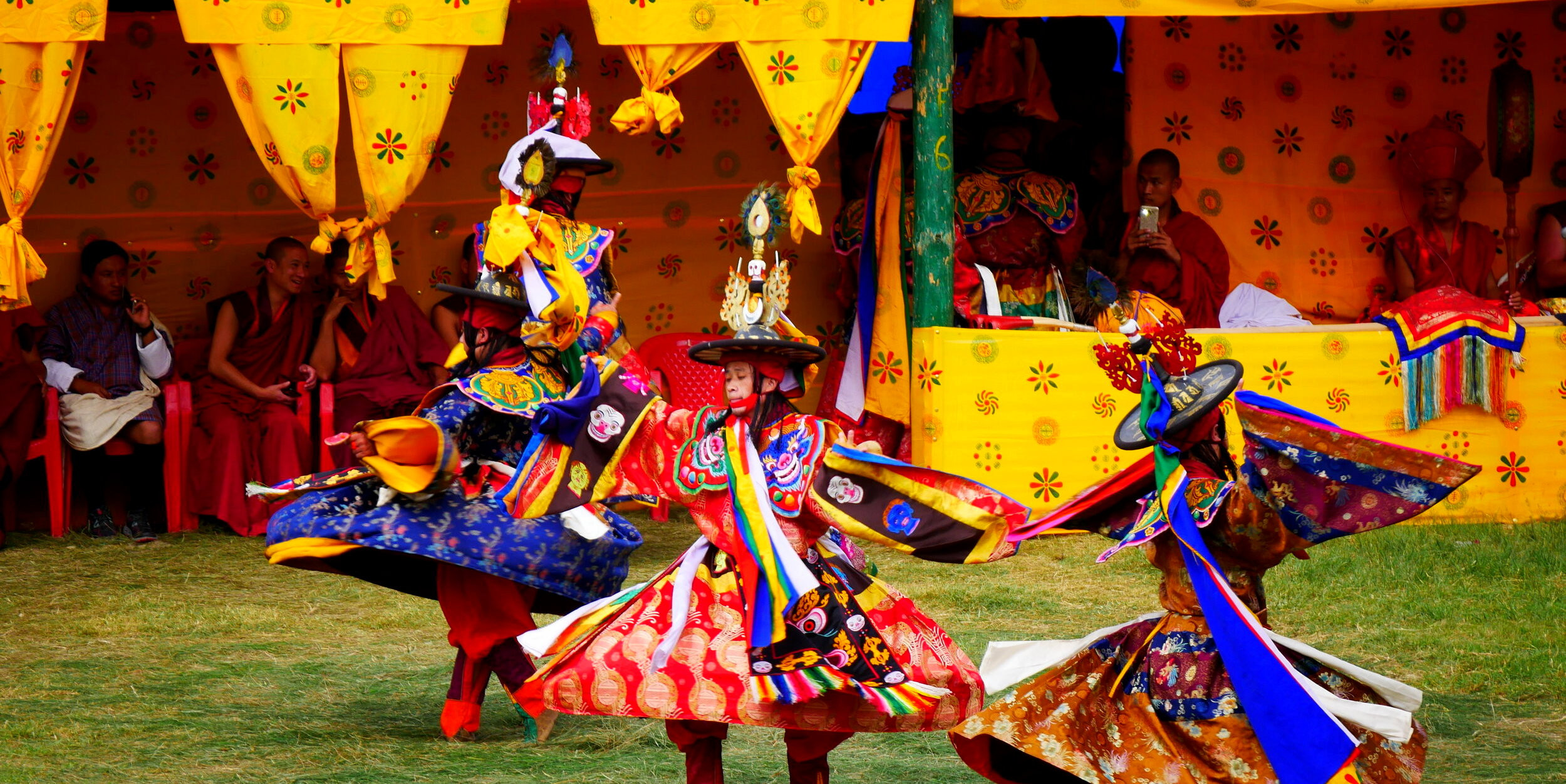
.jpg)





